Major Impacts of Global Warming in the Everest Region of Nepal
Change in Weather Pattern and Altered Ecosystem
Temperature, precipitation, and wind patterns are changing, which has an Impact on the Ecosystems of the Everest region. These changes are causing shift patterns in movement patterns, alteration in population sizes, and a loss of biodiversity. They are also affecting the distribution and abundance of plants and animals. These changes have the potential to have an Impact on Local Communities as well as the Tourism Industry, highlighting the necessity of taking action to reduce the effects of global warming and executing adaptation measures to ensure the continued viability of the region.
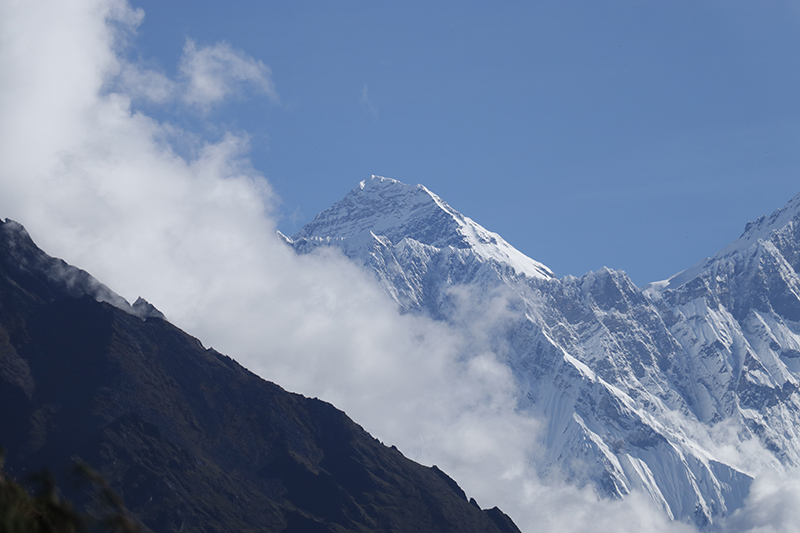
Thinning of Glacial Surfaces
In response to the Warming Change in the Climate of the Everest Region, Glacier Mass Loss is increasing. This pattern is witnessed throughout the central and eastern Himalayas of Nepal. Access to glacier surfaces will become progressively limited as a result of the formation of supraglacial (surface) ponds and big glacial lakes. The Large Glacial Lakes represent a Threat to Downstream towns and infrastructure, such as hydropower facilities, as they are blocked by rock layers containing glacially produced material of unclear stability. Avalanches, Rock Falls into the Lake, or a disaster like an Earthquake that tumbles the dam can cause serious drainage occurrences called Glacial Lake Outburst Floods (GLOFs), in which a lot of water rushes rapidly downstream.
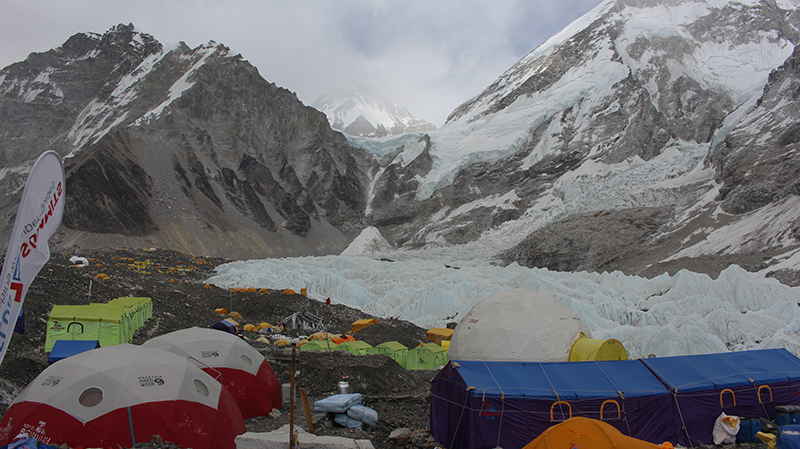
Moreover, when the surface melts away, the interior glacier drainage may be reorganized or blocked, and unexpected drainage may take place, leading to smaller outburst flood occurrences which may also have an Impact on Popular Trekking Routes and Mountaineering Activities in the Area. The Kongma La Pass trail across the Khumbu Glacier is expected to become impassable in coming years due to supraglacial pond expansion and glacier thinning, according to supraglacial pond expansion, and will likely require considerable redirection.
Increased Risks of Natural Disasters
The Impacts of Global Warming are changing the Weather Conditions and Increasing the Risk of Natural Disasters in the Everest region of Nepal. These changes include Higher Temperatures, which cause more intense precipitation; changes in wind patterns, which Increases the Risk of Rockfall and Avalanches; and Increased Difficulty in Trekking and Climbing. Natural Disaster Risks can Increase as a Result of Globalization in a variety of ways. For Instance:
- The formation of glacial lakes and the potential for Glacial Lake Outburst Floods can be caused when glaciers and ice sheets thaw and melt, respectively.
- Rising sea levels can cause increased coastal erosion and saltwater intrusion, putting low-lying coastal communities at risk.
- More intense precipitation can result in increased flooding and landslides, which can put communities at risk and cause damage to both infrastructure and crops.
- Water scarcity and drought can be caused in some regions by rising temperatures and shifting patterns of precipitation. This has the potential to have a wide range of negative effects on agriculture, as well as on food security and the environment.
It is important to take action to reduce greenhouse gas emissions and implement adaptation Measures in Order to Reduce the Risks of Natural Disasters and ensure the adaptability of communities in the face of a changing climate.
Rising Temperature
Rising temperature is one of the most notable Effects of Global Warming in the Everest region. Over the course of the last few decades, there has been an increase in the region's average temperature, which has resulted in the melting of glaciers and ice caps. This melting has significant repercussions for the local ecosystems, water supplies, and communities that are dependent on the glacial melt for agricultural purposes and drinking water. In addition, Rising Temperatures can result in Natural Disasters that are more frequent and severe, such as Flash Floods and Landslides. These Rising Temperatures can also have an effect on the stability of the mountains, making them more susceptible to Rock slides and Avalanches.
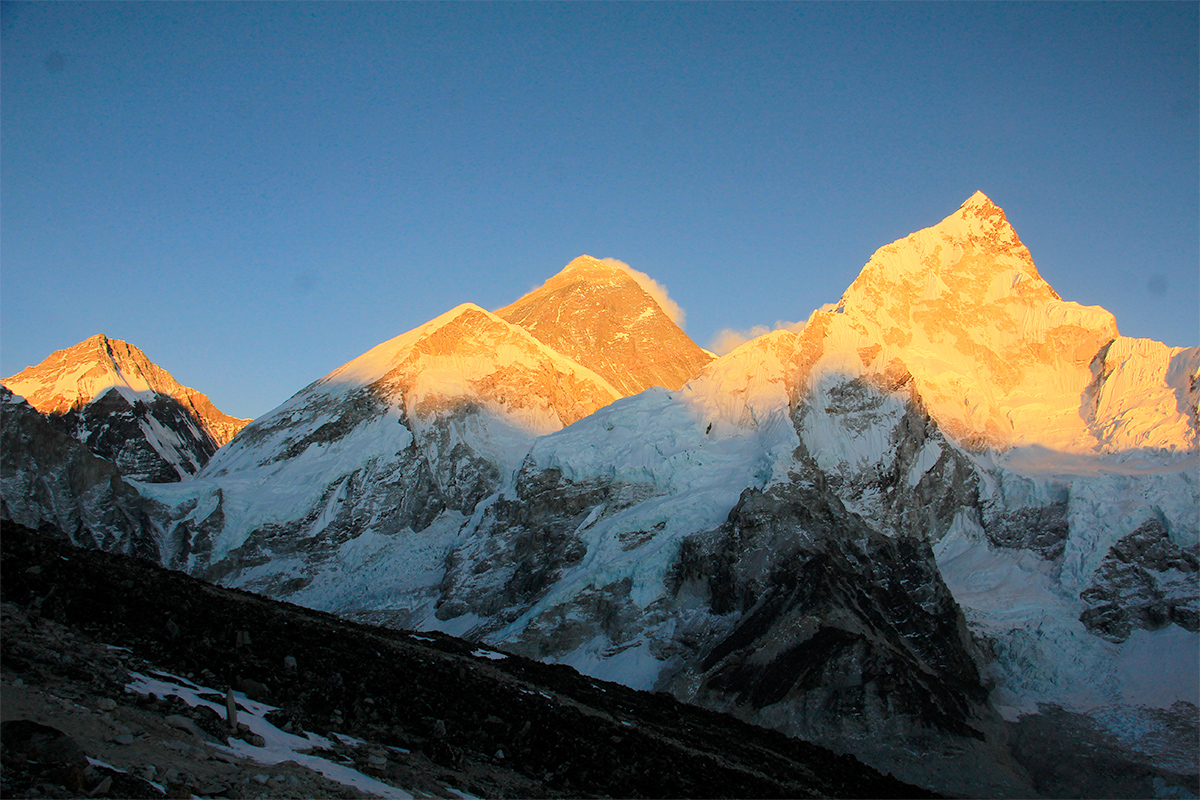
Melting glaciers have made Everest Rivers more unpredictable, putting downstream populations at risk. High-Altitude floras and faunas are also affected by mountain ice and snow loss. As temperature increases, local agriculture and livestock grazing become less sustainable, affecting local livelihoods. Furthermore, the region's Tourism Industry, which is based on the region's snow-capped peaks, may suffer if the mountains lose their scenic appeal.
Major Causes of Global Warming in Nepal
Deforestation
Deforestation has a Major Impact on Global Warming because trees remove carbon dioxide from the air. Large areas of forest have been cleared in Nepal to make way for agriculture, urbanization, and other forms of development. This has resulted in the loss of large regions of plants that are able to absorb carbon, which in turn has led to an increase in the overall level of emissions of greenhouse gasses. The capacity of forests to act as carbon sinks, which would otherwise help to lessen the Effects of Global Warming if it were not for Deforestation, is also reduced as a result of this system.
Industrialization
As a consequence of Nepal's rapid economic growth, the country's overall energy consumption as well as its emissions of greenhouse gasses have increased. Industries are major contributors to the emission of harmful gasses like carbon dioxide and methane into the environment as a result of the manufacturing processes that they use. Due to Nepal's increased reliance on fossil fuels for energy production and transportation, the country has experienced an increase in carbon dioxide and other greenhouse gas emissions. This is one of the Major Causes of Global Warming in Nepal.
Transportation
Since transportation in Nepal relies heavily on the burning of fossil fuels, which results in the Emission of Greenhouse Gasses into the atmosphere, this sector is one of the country's Most Significant Contributors to Global Warming. This results in an increase in emissions from personal vehicles, as well as those from buses, trucks, and airplanes, all of which contribute to the warming of the planet. In order to address this issue, Nepal can promote the utilization of electric vehicles, work to improve public transportation, and foster the utilization of alternative forms of transportation. The rise in mobility has also led to an increase in particulate matter emissions, which are harmful to both the environment and the health of humans.
Improper Waste Management
The improper disposal of waste, including solid and liquid waste, results in the release of methane and other hazardous gasses into the environment. This has repercussions for environmental problems such as the acceleration of global warming. When organic waste is allowed to decompose over time in landfills and other waste disposal facilities, methane, a powerful greenhouse gas, is released into the atmosphere. Errors in the management of hazardous waste can also lead to the release of hazardous substances into the environment, which can have long-term repercussions not only for the environment but also for human health.
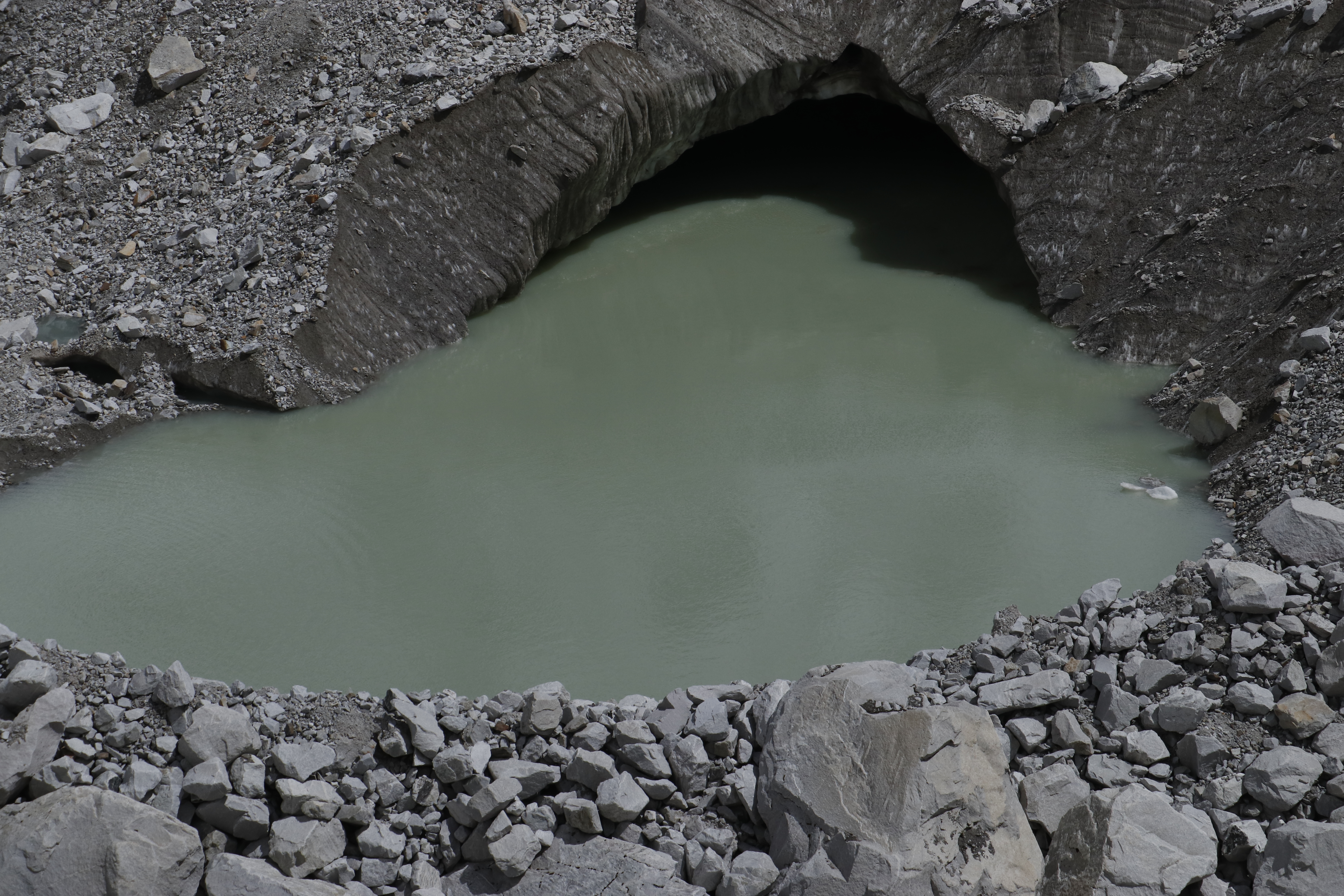
Agricultural Practices
Agricultural practices in Nepal, such as the use of chemical pesticides and fertilizers, have contributed to the pollution of the surrounding environment with potentially harmful chemicals. As a direct consequence of this, air pollution, water pollution, and the degradation of soil have each contributed to the phenomenon of global warming. When synthetic fertilizers and pesticides are used, they contribute to an increase in the amount of nitrous oxide that is released into the atmosphere. Nitrous oxide is a potent greenhouse gas.
Reduction Measures for Global Warming in Nepal
To minimize greenhouse gas emissions and reduce the effects of climate change, it's essential to address these causes of global warming in Nepal. The following measures can be considered to mitigate the Effect of Global Warming in Nepal:
Climate Friendly Practices
In the Everest region, the implementation of Climate-Friendly Practices, such as lowering energy consumption, making use of renewable energy sources, and promoting sustainable transportation options, can assist in lowering greenhouse gas emissions and minimizing the effects of global warming.
Sustainable Tourism
Encouraging Sustainable Tourism practices, like reducing waste and minimizing the carbon footprint of tourists, can help reduce the impact that tourism has on the environment. Sustainable tourism practices include reducing waste and minimizing the carbon footprint of tourists. This can include the actions such as minimizing the usage of plastics that are only intended for one use and promoting options for low-carbon modes of transportation.
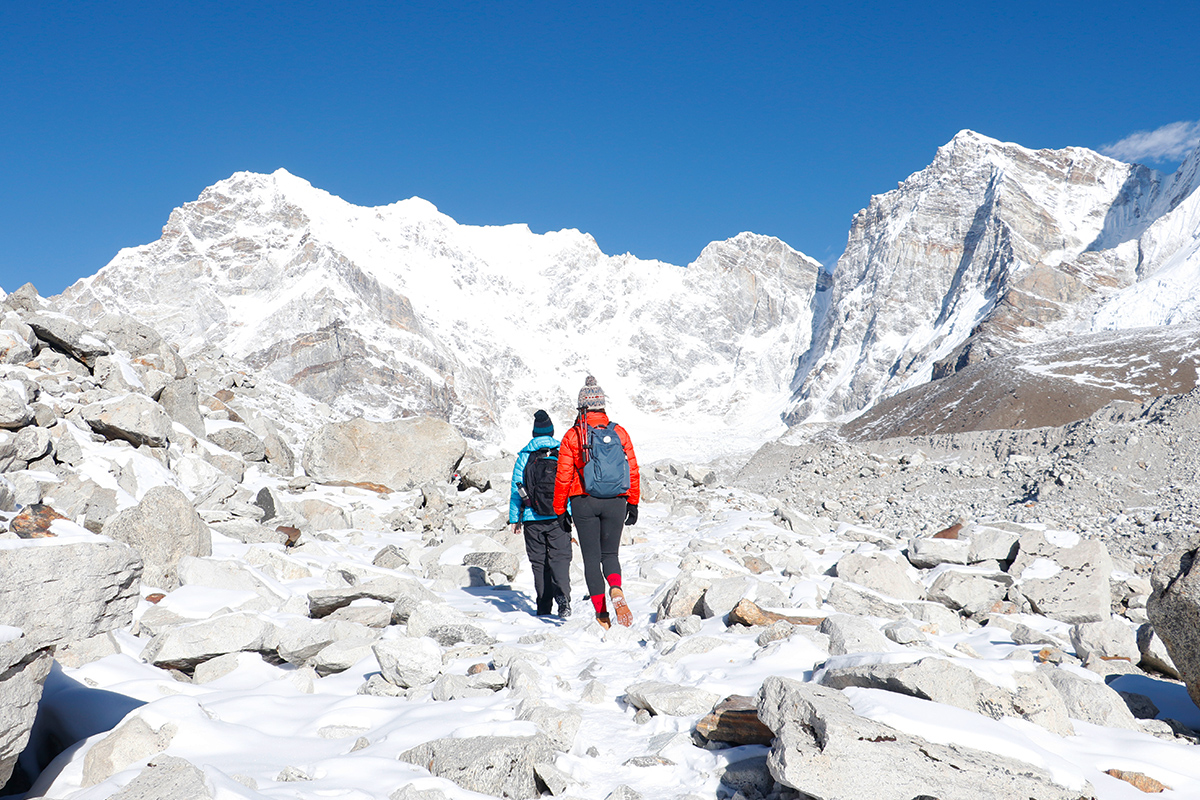
Glacier Protection
Preserving the mass of glaciers and ensuring that populations further downstream have a reliable source of water can help mitigate some of the negative effects of Global Warming. This can be accomplished by the implementation of measures such as limiting the amount of garbage and pollutants that are present in the area surrounding glaciers.
Education and Awareness
It is possible to promote awareness and urge people to take action by educating local populations and tourists about the effects that global warming will have on the Everest region as well as the need to engage in sustainable practices.Some specific ways in which education and awareness can be used as preventive measures in the Everest region:
- Community Education: Informing local communities about the effects of global warming on the area and the significance of cutting emissions might drive individuals to take action in their day-to-day lives.
- Tourist Education: Providing tourists with information about the impacts of their journey and encouraging the use of low-carbon transportation options and sustainable tourism practices are two ways in which the region's tourism industry may lower its overall carbon footprint.
- Business Education: Educating owners of businesses on the impacts their operations have on the environment and the need for decreasing emissions can inspire enterprises to adopt environmentally sustainable practices and lower their overall carbon footprint.
- Climate Change Education: Spreading education and awareness about the causes and effects of climate change can help individuals understand the urgent need for action and encourage them to take action to reduce their own carbon footprints. Providing education and awareness about the causes and impacts of climate change.
The Everest region of Nepal has the potential to establish a community of individuals who are informed about the Effects of Global Warming and who are motivated to take action to avert these effects by increasing awareness and providing educational opportunities. Here is a blog for things to know before planning for EBC trek.
Adaptation Strategies
Communities in the Everest region can be helped to better prepare for and respond to the Effects of Global Warming by developing and executing adaptation strategies such as water management plans and disaster risk reduction plans.
Conservation Efforts
In the Everest region of Nepal, conservation efforts are an important preventative action that should be taken against the effects of global warming. This can include protecting high-altitude ecosystems such as forests, wildlife, wetlands, and glaciers in order to keep their capacity to absorb carbon, protecting wildlife and their habitats in order to maintain biodiversity, putting into practice sustainable land use practices, and promoting sustainable tourism practices.
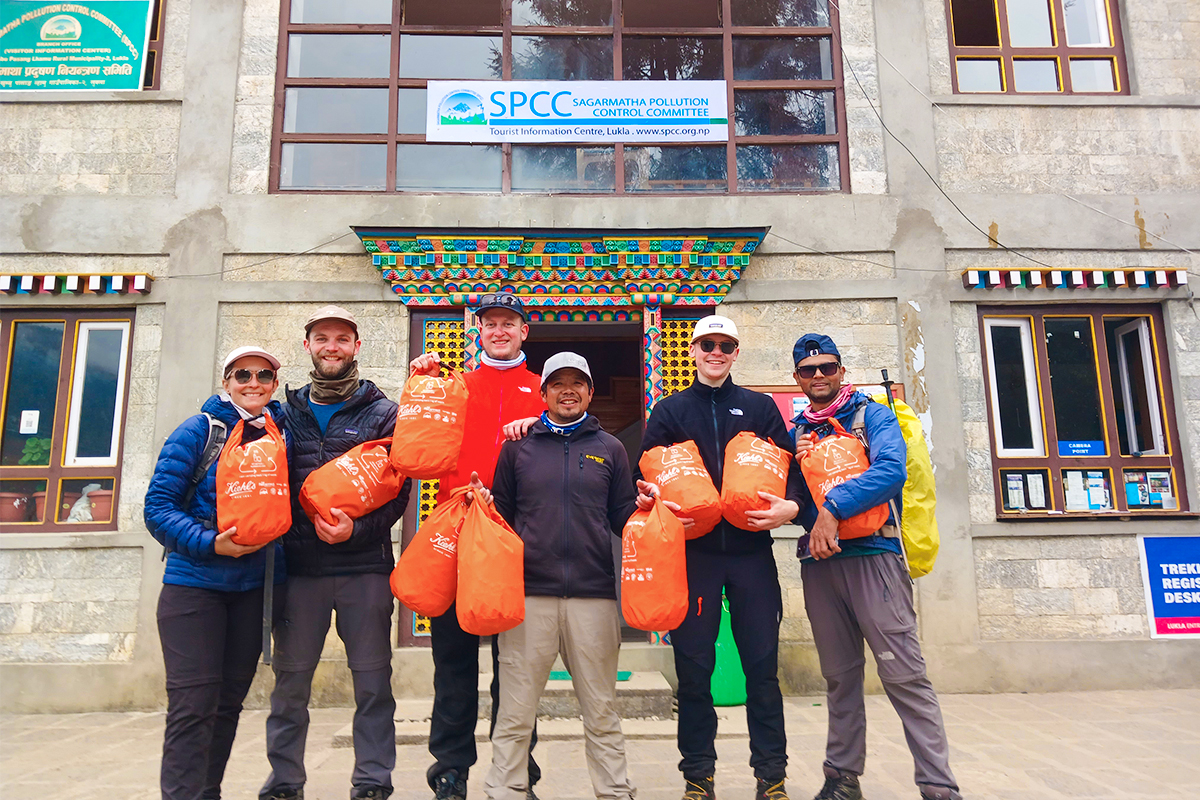
Conservation efforts can assist lessen the effects of global warming and maintain the region's resilience in the face of climate change if they focus on reducing emissions and maintaining the delicate ecosystem of the region.
Support and Increase Waste Management Initiatives
Helping reduce pollution and waste in the Everest region, which can contribute to global warming and other environmental problems, can be accomplished by supporting and increasing waste management initiatives, such as proper waste disposal and composting programs.
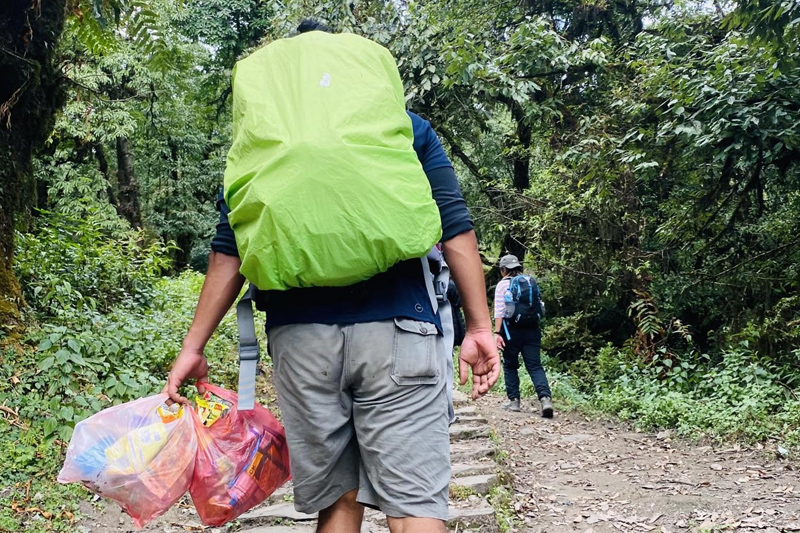
Faqs related to the Impact of Global Warming on the Everest Region of Nepal
How is Global Warming Impacting the Water Resources in Nepal?
Global warming is having a significant impact on the water resources in Nepal. Rising temperatures are causing the melting of glaciers and snow, which in turn is leading to an increase in runoff and the risk of flooding. At the same time, the decreasing availability of water in the dry season is leading to water scarcity and impacting agriculture and other industries that rely on water.
What is The Highest Temperature Ever Recorded in the Everest Region of Nepal?
The highest temperature ever recorded in the Everest region of Nepal was in 2020 when the temperature reached -1.3°C (29.7°F). This was a new record and highlights the increasing trend of warming in the region.
What is The Lowest Temperature Ever Recorded on the top of Mount Everest?
The lowest temperature ever recorded on Mount Everest was -42 Celsius in December 2004. On average, the temperature above the peak is 103 degrees Fahrenheit (or 57 degrees Celsius) lower than it is at sea level.
What Impact Does Global Warming Have on Mount Everest?
Mount Everest is experiencing significant changes as a direct result of global warming, which is resulting in the melting of glaciers and poses a threat to the mountain's structural integrity. The risk of avalanches is rising as a result of glacier melting, which in turn is altering climbing routes and raising the stakes for climbers.
How is Global Warming Affecting the Tourism in Nepal?
Global warming is having a significant impact on the tourism industry in Nepal, particularly in the Everest region. The changing climate is affecting the stability of climbing routes and making it more dangerous for climbers, which in turn is reducing the number of tourists visiting the region.
What Areas On Everest Are Affected The Most By Climate Change?
The areas on Everest that are most affected by climate change are the glaciers and snowfields. The melting of glaciers is causing an increase in runoff and the risk of flooding, which in turn is affecting climbing routes and making them more dangerous for climbers. According to a new study by researchers of ice cores from the glacier, the Highest Glacier on the Highest Mountain on earth is losing decades worth of its ice each year.
How Does Global Warming Affect the Future of the Everest Region of Nepal?
Global warming is affecting the future of the Everest region in a number of ways. The melting of glaciers and snow is causing an increase in the risk of avalanches and flooding, which in turn is affecting the stability of the mountain and making it more dangerous for climbers. The changing climate is also reducing the number of tourists visiting the region and affecting the livelihoods of local communities that rely on tourism. It is critical that actions are taken to reduce emissions and prevent the worst Impacts of Global Warming in the Everest region of Nepal.
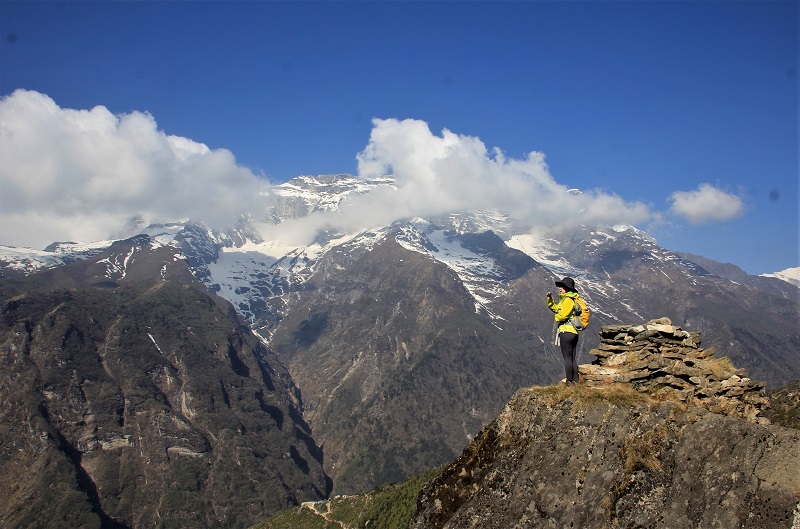
Conclusion
The interaction of humans with the ecosystem of the Himalayas is one that maintains a difficult balance. Since Nepal's industrialization and its population have increased dramatically and caused a huge impact on the environment. There are definitely signs of Climate Change along the Trekking Route to the Everest Region of Nepal. The daily increase in temperature is making ice fall even more unstable. To avoid the seracs (Blocks of Glacial Ice) that can fall around you during the day, night climbing is advised for the climbers in Everest Region. Humans should be more responsible towards the nature and respect nature more genuinely.
For further knowledge about Trekking in the Nepal, visit the link here. You can also book your trips from a Local Agency like Footprint Adventure for better-organized trips considering Changing Climatic Conditions. Depending on your time and interests, we can also arrange customized itineraries with the best time for you to visit Everest as well as regions of Nepal or you can contact us here.










